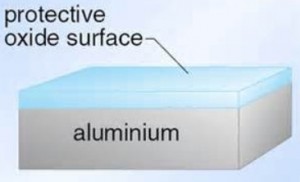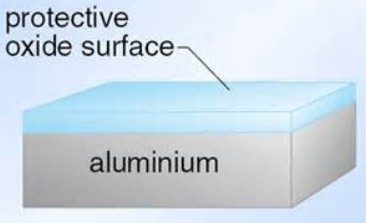When sulfate solution is in the process of oxidation, you can find that aluminum ion content is adding in the solution area near the anode. At the moment, oxygen is separated from it, and it is composed of oxide film. However, hydrogen is separated on cathode. The composition of oxide film reflects that two processes are proceeding together. The two processes are electrochemical film forming process of the oxide film and chemical dissolving process.

Of course, only when the film forming speed is greater than the film dissolution rate will the oxide film thickness intensification be produced. Because the resistance of the aluminum oxide film is very big and when its thickness reaches the certain limitation, the resistance hampers the process of anodic reaction. Then, the current can not be passed. At this point, the film forming speed is equal to zero dissolving process which is not suspended. The oxide film thickness tends to be thinner.
The essence of anodic oxidation process is that H + and OH - discharge and then new ecological oxygen oxidize aluminum. Then, AlzO3 is formed. At the beginning of the oxidation, a layer of thin and fine oxide film quickly generates on the anode (that is close to inner layer with no holes on the surface of metal surface). And the resistance is also big. In the first few seconds, the voltage will make a dramatic increase, which will cause that part of thin oxide film is “broken down”. Dissolution speed of the breakdown film accelerates, and it appears the cavity and is continue to stretch. This provides the conditions for further thickening the film and the small hexagons whose center is a hole compose outer oxide film layers.
